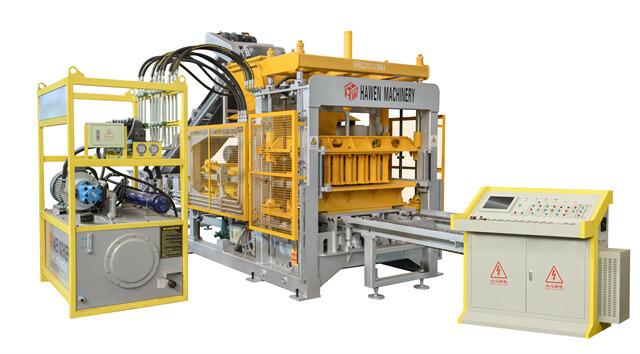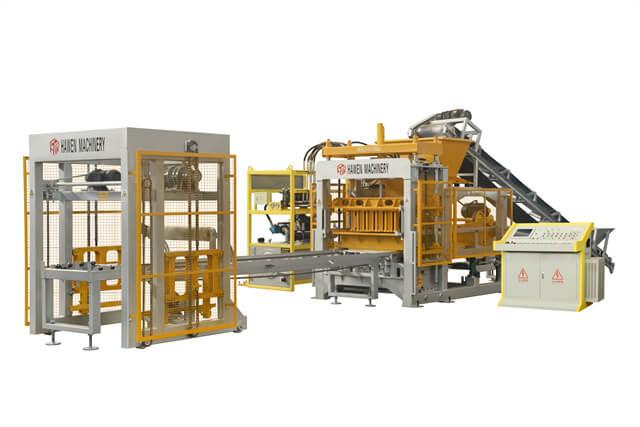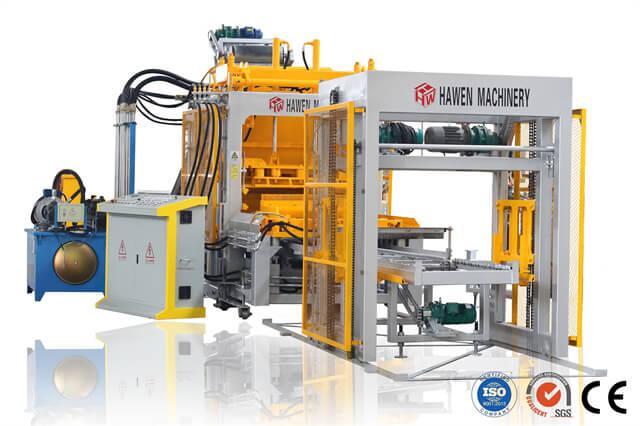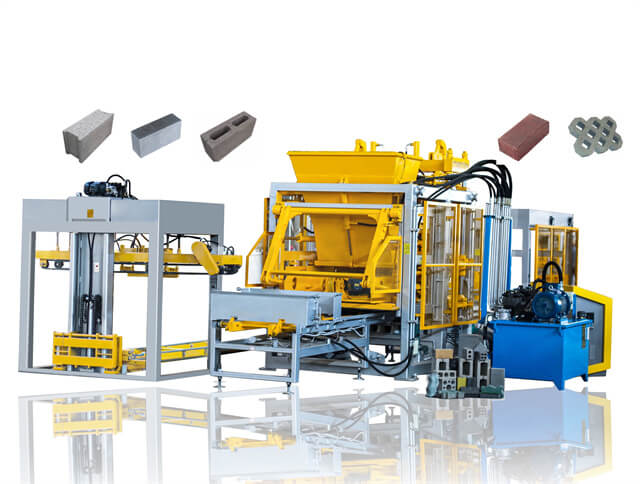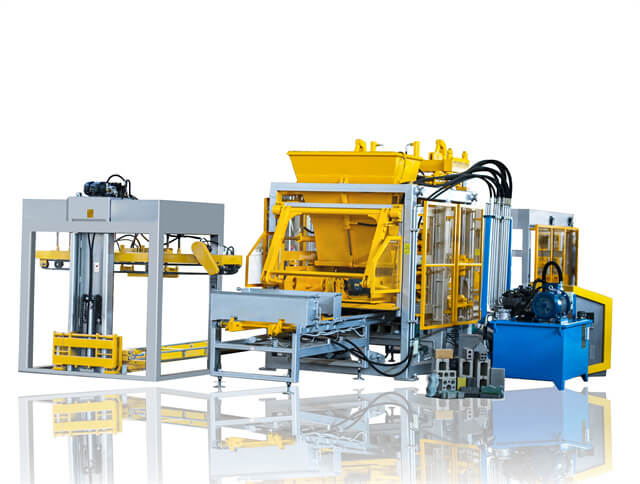Author:HAWEN Block MachineFROM:Brick Production Machine Manufacturer TIME:2024-04-01
The evolution and working principles of block manufacturing machines have undergone significant advancements over the years. These machines play a crucial role in the construction industry by efficiently producing blocks used for various purposes, such as building walls, fences, and infrastructure. In this article, we will explore the evolution of block manufacturing machines and delve into their working principles.
In the past, block manufacturing involved manual labor and basic tools. Workers would mix concrete or other materials manually, pour them into molds, and then allow them to cure naturally. This process was time-consuming and labor-intensive, resulting in lower productivity and inconsistency in block quality.
To improve efficiency, manual block machines were introduced. These machines featured molds and levers that allowed workers to compress and shape the blocks more easily. While still requiring some manual effort, these machines provided greater consistency and higher production rates compared to traditional methods.
The advent of semi-automatic block machines marked a significant step forward in block manufacturing. These machines incorporated automated features like vibrators and hydraulic systems, reducing the need for manual labor. Workers would load the raw materials into the machine, and it would perform the mixing, compacting, and ejection processes automatically. This resulted in increased productivity and improved block quality.
Fully automatic block manufacturing machines revolutionized the industry by eliminating the need for human intervention during the entire process. These machines are equipped with advanced control systems and sensors that monitor and adjust the various parameters required for block production, such as material ratios, compaction forces, and curing times. The entire process, from raw material input to block ejection, is automated, resulting in consistent quality and high production rates.

The working principle of modern block manufacturing machines involves several key steps. Firstly, the raw materials, typically a mixture of cement, aggregate, and water, are accurately measured and fed into the machine's hopper or mixer. The mixing process ensures uniform distribution of the materials, creating a homogenous mixture. The mixture then moves into the mold cavity, where compaction occurs through hydraulic pressure, vibration, or both. After compaction, the blocks undergo a curing period, allowing them to gain strength. Finally, the fully-formed blocks are ejected from the machine, ready for use.
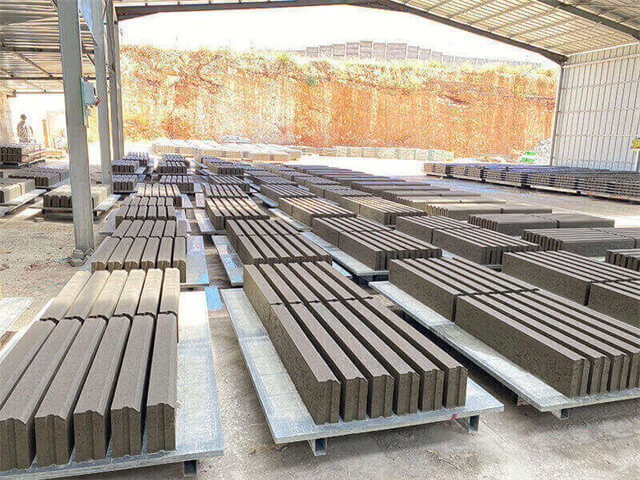
Over time, block manufacturing machines have undergone significant advancements in design. These improvements include the use of computer-aided design (CAD) software to create precise machine components, the integration of energy-efficient systems to reduce power consumption, and the implementation of safety features to protect operators.
Block manufacturing machines find widespread applications in the construction industry. They offer numerous benefits, such as increased production capacity, improved product quality, reduced labor costs, and enhanced project efficiency. Additionally, these machines can produce blocks of various sizes, shapes, and textures, enabling architects and builders to explore creative designs and meet specific project requirements.
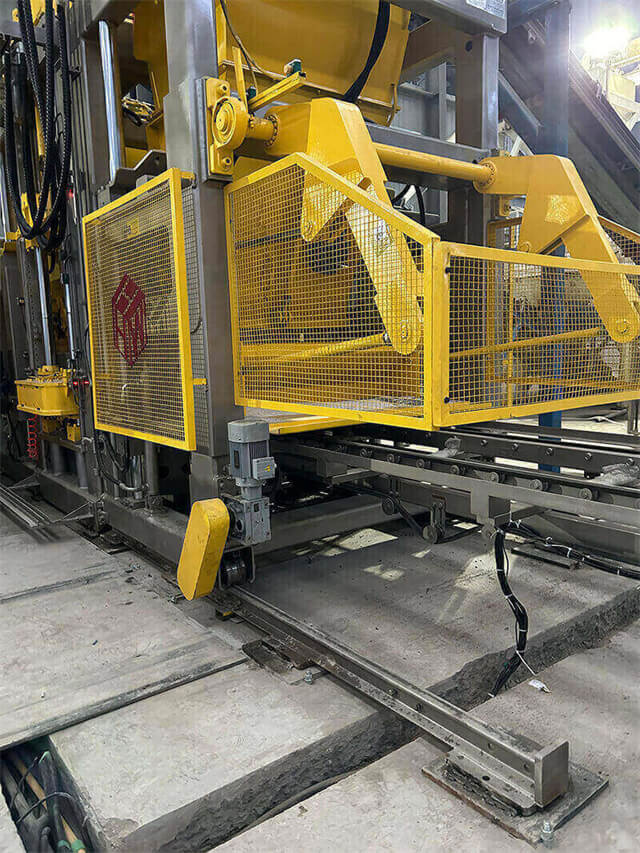
The evolution of block manufacturing machines has transformed the construction industry by revolutionizing the way blocks are produced. From manual techniques to fully automatic systems, these machines have significantly improved productivity, consistency, and quality. With further advancements in machine design and technology, block manufacturing machines will continue to play a vital role in constructing durable and sustainable infrastructure.
